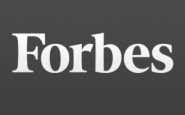Dealing with Organizational Change Inherent in Driving Today’s Application Services
In my two previous blog posts, I pointed out two factors driving demand for application services today, and that they result in greenfield and brownfield opportunities. The third factor in the app demand profile is what we at Everest Group refer to as “vanishing scope.” The objective here is to use new technologies to change the value equation (through speed or cost savings), and it can present greenfield or brownfield opportunities. Of the three, this third factor designates application services that require the most change inside an organization.
Something very significant is happening in the vanishing-scope space: We’re seeing really slow, incremental adoptions of these technology-enabled initiatives even though the potential for change is dramatic. Although people see how new technologies and approaches clearly can drive big impacts, the initiatives fail to get traction – thus the vanishing scope designation.
Because they seek to change the status quo, executives must recognize that there will be passive-aggressive resistance. There is a very different set of emotions and issues to deal with in passive-aggressive behaviors. And people tend to blame the technology for failure.
In the successful examples of successfully driving big change that we know of, the executives had to drive through that resistance and turn it around. Executives need to define the intended performance breakthrough in a very clear way and engage the organization to embrace that vision and change.
In all three factors in the demand profile driving application services today, disruptive technologies enable both greenfield and brownfield opportunities. But these new, innovative technologies often require end-to-end orientation. The opportunities for growth and for changing the way services are delivered require a different way of organizing people, ensuring and empowering the right talent and aligning them with the breakthrough performance objectives.


